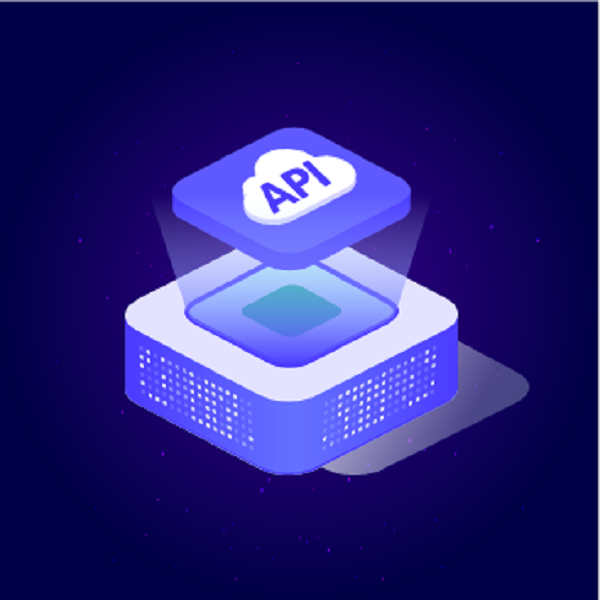Residential Proxies
Allowlisted 200M+ IPs from real ISP. Managed/obtained proxies via dashboard.

Proxies
Residential Proxies
Allowlisted 200M+ IPs from real ISP. Managed/obtained proxies via dashboard.
Residential (Socks5) Proxies
Over 200 million real IPs in 190+ locations,
Unlimited Residential Proxies
Use stable, fast, and furious 700K+ datacenter IPs worldwide.
Static Residential proxies
Long-lasting dedicated proxy, non-rotating residential proxy
Dedicated Datacenter Proxies
Use stable, fast, and furious 700K+ datacenter IPs worldwide.

Web Unblocker
View content as a real user with the help of ABC proxy's dynamic fingerprinting technology.
Proxies
API
Proxy list is generated through an API link and applied to compatible programs after whitelist IP authorization
User+Pass Auth
Create credential freely and use rotating proxies on any device or software without allowlisting IP
Proxy Manager
Manage all proxies using APM interface

Proxies
Residential Proxies
Allowlisted 200M+ IPs from real ISP. Managed/obtained proxies via dashboard.
Starts from
$0.77/ GB
Residential (Socks5) Proxies
Over 200 million real IPs in 190+ locations,
Starts from
$0.045/ IP
Unlimited Residential Proxies
Use stable, fast, and furious 700K+ datacenter IPs worldwide.
Starts from
$79/ Day
Rotating ISP Proxies
ABCProxy's Rotating ISP Proxies guarantee long session time.
Starts from
$0.77/ GB
Static Residential proxies
Long-lasting dedicated proxy, non-rotating residential proxy
Starts from
$5/MONTH
Dedicated Datacenter Proxies
Use stable, fast, and furious 700K+ datacenter IPs worldwide.
Starts from
$4.5/MONTH
Knowledge Base
English
繁體中文
Русский
Indonesia
Português
Español
بالعربية


This article systematically analyzes the core functions and technical principles of PC proxy software, explains its application value in the fields of privacy protection, content access, network security, etc., and compares and analyzes the performance differences and applicable scenarios of mainstream proxy technologies.
1. The core definition of PC proxy software
PC proxy software is an application running on a personal computer. Its core function is to transfer and process the user's network request by establishing an intermediate server link. The technical implementation mainly includes the following three-layer architecture:
Client Module
Provide visual operation interface (such as proxy switch, IP selection, protocol configuration)
Built-in traffic diversion rules (customizable domestic and foreign website proxy strategies)
Protocol conversion layer
Support HTTP/HTTPS/Socks5 and other protocol conversions
Implement tunnel encapsulation of TCP/UDP traffic
Server-side Network
Distributed proxy node deployment (usually covering 50+ countries/regions)
Dynamic IP pool management system (automatically removes failed nodes)
Compared with browser plug-in proxies, the advantage of PC proxy software lies in its system-level traffic takeover capability, which can proxy network requests of all applications (such as game clients and download tools).
2. Technical Implementation Path of Core Functions
1. IP address hiding mechanism
Multi-layer proxy chain: at least 3 IP jumps (user → entry node → intermediate node → exit node) are achieved through the Tor network.
Dynamic rotation strategy:
Time trigger: Automatically change the export IP every 10-30 minutes
Traffic trigger: Switch IP after every 100MB of data is transferred
Failure fuse: Enable the backup node within 0.5 seconds after detecting that the IP is blocked by the target server
2. Traffic encryption system
Transport layer encryption
Use TLS 1.3 protocol to establish an encrypted tunnel (AES-256-GCM algorithm)
Supports ChaCha20-Poly1305 encryption suite to address quantum computing threats
Protocol obfuscation technology
Domain Fronting: Disguise proxy traffic as legitimate CDN requests (e.g. mimicking Cloudflare traffic characteristics)
WebSocket masquerading: encapsulate proxy packets into WebSocket protocol format
Metadata protection
Delete the X-Forwarded-For field in the HTTP header that may reveal the real IP address.
Randomize TCP window size and TTL value to confuse network characteristics
3. Comparison of five major technology types
HTTP/HTTPS Proxy
Advantages: Simple configuration, compatible with most web browsers
Limitations: Only processes application layer traffic, cannot proxy games/UDP applications
Typical tools: Charles, Fiddler
Socks5 Proxy
Technical features: Support TCP/UDP full protocol proxy, with user authentication function
Performance bottleneck: Latency increases significantly under high concurrency (latency increases by 30% when there are more than 1,000 connections)
Application scenarios: BT download acceleration, overseas game connection
VPN (Virtual Private Network)
Global proxy: takes over all network traffic of the system, including DNS queries
Encryption strength: usually IPSec or WireGuard protocol
Intelligent routing proxy
Core technology: Intelligent traffic diversion based on rule engine (such as domestic direct connection/foreign proxy)
Protocol support: compatible with SS/V2Ray/Trojan and other protocols
Representative software: Clash, Surge
P2P Proxy Network
Decentralized architecture: using user nodes to build a distributed proxy network (such as Hola VPN)
Resource consumption: Upload bandwidth usage can reach over 70%
Security risk: Traffic may be monitored by malicious nodes
4. Core application scenarios and configuration recommendations
1. Privacy protection scenarios
Anonymous browsing: It is recommended to enable multi-layer proxy chain + traffic obfuscation technology, and use the browser fingerprint protection plug-in
Cryptocurrency trading: independent residential IP is required to avoid multiple account operations associated with the exchange
2. Content access scenarios
Streaming Unblocking: Choose a dedicated node that supports Netflix/HBO (need to check that the IP is not marked as a data center)
Academic resource acquisition: Configure university IP proxy to access academic databases such as Elsevier and IEEE
(III) Network security protection
Public WiFi protection: Force all traffic to be encrypted via a proxy to block malicious injection scripts
Enterprise data leakage prevention: deploy private proxy gateway to monitor and filter sensitive data leakage
4. Development and testing scenarios
Multi-region testing: quickly switch IP addresses in different countries to verify service region restrictions
Crawler development and debugging: Avoid anti-crawling mechanism triggering frequency limit through IP pool rotation
5. Six key dimensions of selection and evaluation
Protocol compatibility
Must support at least Socks5 and HTTP dual protocols
Bonus: Compatible with new protocols such as WireGuard
Node network quality
Benchmark requirements: European and American node latency <150ms, packet loss rate <1%
Advanced requirement: Provide BGP Anycast nodes to optimize routing
Privacy protection strength
Basic protection: no log policy + fully encrypted disk storage
Enhanced measures: support anonymous payment methods such as Bitcoin
Client functionality
Necessary functions: traffic statistics, node speed measurement, rule grouping
Advanced features: API interface support, automated script extension
Security audit records
A third-party penetration test report is required (such as OWASP TOP 10 vulnerability repair certificate)
Open source software gives priority to projects that have undergone authoritative code audits
Compliance Certification
Enterprise users need to check whether they have ISO 27001 certification
Cross-border business must comply with GDPR cross-border data transmission regulations
As a professional proxy service provider, abcproxy's PC client software supports advanced functions such as intelligent routing, multi-protocol stack parallelism, and traffic encryption, especially in terms of high anonymity proxy and IP pool scale (covering 200+ countries). Users can choose residential proxy or data center proxy solutions according to business needs, and monitor proxy performance indicators in real time through the traffic analysis panel.
Featured Posts
Popular Products
Residential Proxies
Allowlisted 200M+ IPs from real ISP. Managed/obtained proxies via dashboard.
Residential (Socks5) Proxies
Over 200 million real IPs in 190+ locations,
Unlimited Residential Proxies
Use stable, fast, and furious 700K+ datacenter IPs worldwide.
Rotating ISP Proxies
ABCProxy's Rotating ISP Proxies guarantee long session time.
Residential (Socks5) Proxies
Long-lasting dedicated proxy, non-rotating residential proxy
Dedicated Datacenter Proxies
Use stable, fast, and furious 700K+ datacenter IPs worldwide.
Web Unblocker
View content as a real user with the help of ABC proxy's dynamic fingerprinting technology.
Related articles

How does the ChatGPT RAG example improve information processing capabilities
Analyze the actual application scenarios of ChatGPT combined with Retrieval Augmented Generation (RAG) technology, explore its value in knowledge integration and data acquisition, and understand how abcproxy provides underlying support for the RAG system.

How does Best Socks5 Proxy ensure anonymous network needs
This article explores the core value of Socks5 proxy in anonymous networks and analyzes how abcproxy high anonymous proxy meets diverse security needs.

How to remove website access restrictions
This article analyzes the technical principles and mainstream solutions of website access restrictions, and explores the core role of proxy IP in bypassing regional blocking and anti-crawling mechanisms. abcproxy provides multiple types of proxy IP services to help you break through network restrictions efficiently.